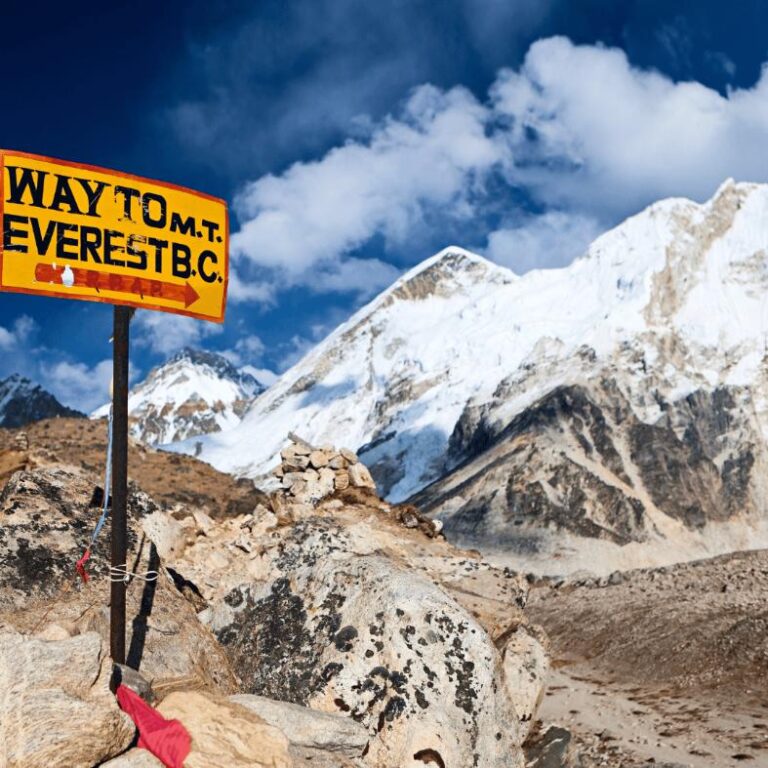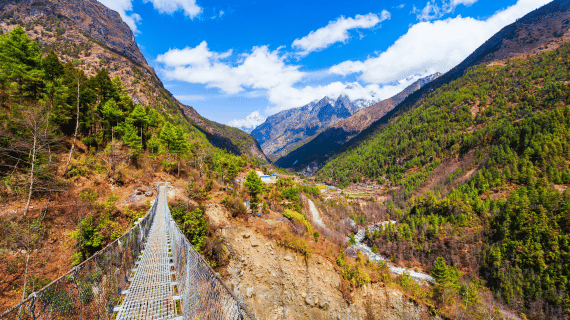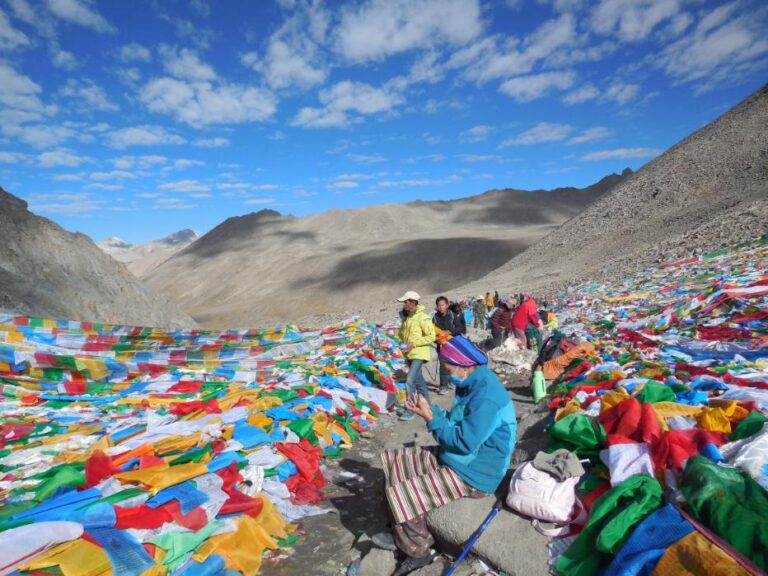
Table of Contents
An Introduction to the Top 10 Peaks in Nepal Himalayas
Nepal’s Himalayas stand as a testament to nature’s grandeur, offering an awe-inspiring landscape that’s home to some of the world’s most remarkable peaks. Exploring the Top 10 Peaks in Nepal Himalayas unveils a journey of breathtaking beauty and spiritual rejuvenation.
Exploring the Peaks of Nepal

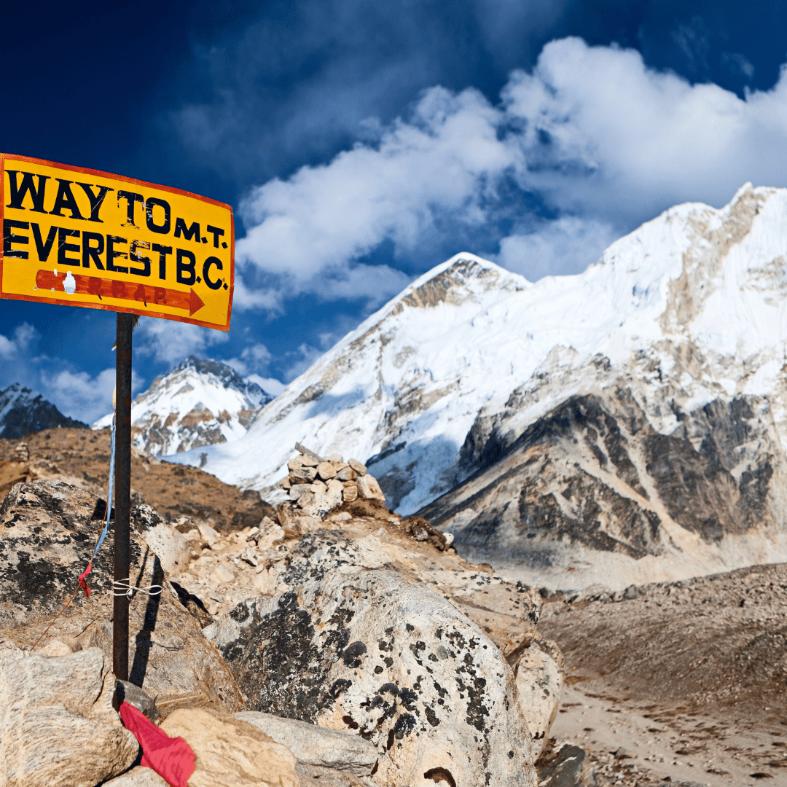
1. Mount Everest
Mount Everest is the highest peak on Earth, standing tall at an impressive 29,032 feet (8,849 meters). It is one of the top 10 peaks in Nepal. It’s located in the Himalayas, on the border of Nepal and Tibet, and attracts adventurers and mountaineers from all over the world. The mountain was named after Sir George Everest, a former Surveyor General of India.
The Everest Base Camp trek is a famous pilgrimage for trekkers, taking them through Sherpa villages and offering a glimpse into their rich culture and traditions. However, climbing Everest is not an easy task. It requires physical strength, steady determination and a deep respect for the unpredictable forces of nature.
The mountain is also known as “Chomolungma” by the Tibetans, which means “Goddess Mother of the World.” It holds great spiritual and cultural value for the region’s inhabitants.
The summit which is famously known as the “death zone,” is an extreme environment where oxygen levels are critically low. Only the most experienced climbers dare to be there.
Despite the risks and challenges, summiting Everest remains a major attraction in trekker’s lives. It showcases human tenacity and the unrelenting pursuit of conquering the impossible. The calm yet treacherous beauty of Everest stands as a dream for many. It invites them to test their limits while be astonished at the greatness of the natural world.
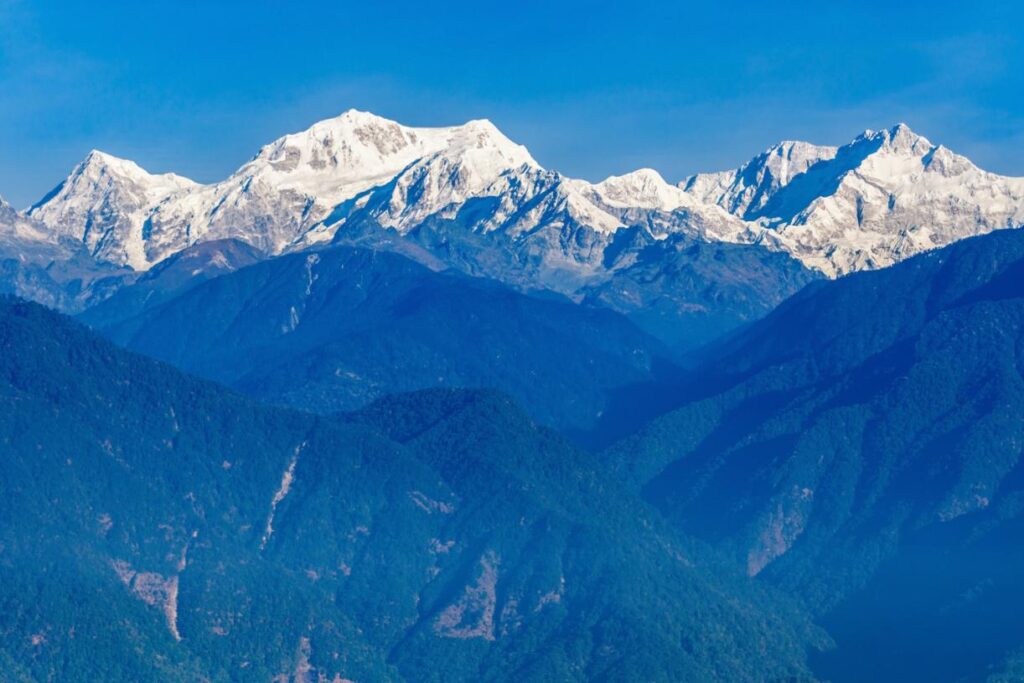
2. Kanchenjunga
Kanchenjunga is the third-highest peak in the world, located in the eastern Himalayas between Nepal and Sikkim, India. Its name means “The Five Treasures of the Great Snow” in Tibetan, representing the mountain’s five peaks.
It also lies on one of the top 10 peaks in Nepal. The area is very rich in biodiversity. It provides a sanctuary for diverse plant and animal life. Climbing Kanchenjunga is a real challenge. But it attracts both adventurous climbers and trekkers seeking the ultimate Himalayan experience.
The mountain is infuse with in tradition and local myths and is considered very sacred by native communities. Its five peaks are said to hold treasures such as gold, silver, gems, grain, and holy books.
The region around Kanchenjunga is place where you can see different ethnic cultures, giving visitors a brief look into the traditions and lifestyles of the Sherpas, Limbus, and Rai’s. The difficult terrain and unpredictable weather demand respect from climbers, making the ascent both a physical challenge and a journey through ancient legends and natural wonders.
3. Lhotse
Lhotse is the fourth-highest mountain in the world and is considered one of Nepal’s top ten must-see peaks due to its stunning beauty and its proximity to Mount Everest. Situated next to Everest, Lhotse provides an beautiful sight for climbers and adventurers. It also lies in one of the Top 10 Peaks in Nepal.
Its most famous feature, the Lhotse Face, is a challenging ice wall that requires climbers to have both skill and courage. From the top of Lhotse, climbers can not only see the grandeur of Everest but also enjoy a unique view of the entire Everest region, with breathtaking landscapes that seem almost unreal.
What makes Lhotse special is its role in the Everest Base Camp trek, making it an essential part of the journey for many climbers and trekkers. Its status as one of the world’s 8,000-meter peaks attracts experienced climbers who seek the excitement of conquering extreme heights.
Moreover, Lhotse possesses a captivating beauty that enchants those who explore the Khumbu region, providing a glimpse into the Sherpa culture and its rich traditions and adding a cultural aspect to the stunning natural scenery that surrounds this remarkable peak.

4. Makalu
Makalu is a mountain located in the heart of the Nepal Himalayas and is considered one of the Top 10 Must-See Mountains. It also lies on one of the top 10 peaks in Nepal. It stands as the world’s fifth-highest peak, with a unique pyramid shape and challenging terrain that attracts adventurers and mountaineers seeking the ultimate test of skill and endurance.
Its remote location and unspoiled wilderness add to its allure, captivating those who crave unexplored heights. Climbing Makalu requires courage, technical expertise, and unwavering determination, making it a popular destination for experienced climbers.
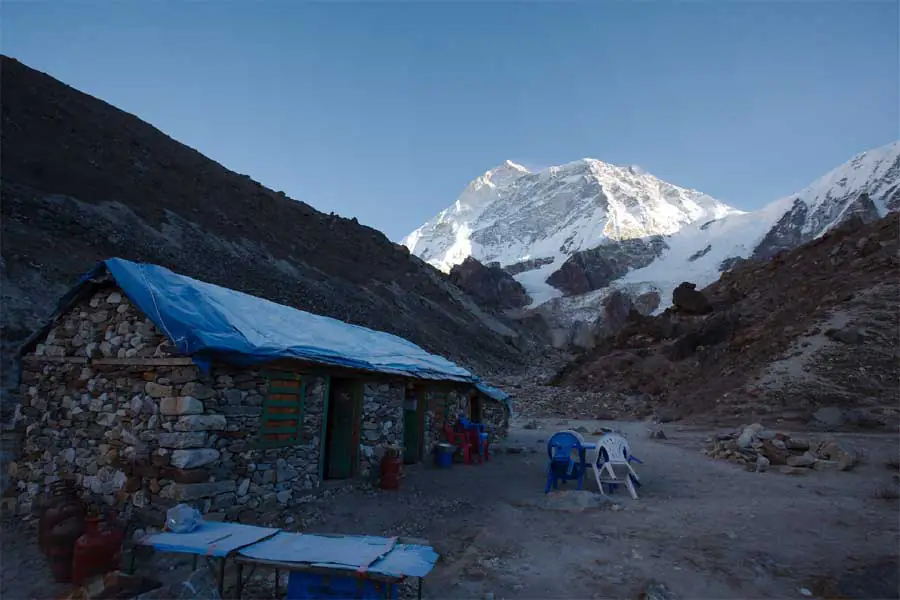
In addition to its physical demands, Makalu’s majestic presence in the Himalayan landscape showcases nature’s grandeur, drawing explorers to witness its stunning views and discover the untamed spirit of the mountains.
Additionally, there is Makalu Base Camp Trek which offers some incredible views of the Himalayas. The crystal-clear lakes up in the hills will make you fall in love with the place. And some of the challenging paths that take you to the rocky base camp of Makalu will be a real challenge—an adventure of a lifetime!
Makalu is not just about its impressive height but also about the unforgettable experience it offers. Climbing its challenging routes and navigating through icefalls and rocky cliffs is an adrenaline-fueled journey that tests the limits of human capability.
Moreover, Makalu’s location within the Makalu Barun National Park provides a chance to explore the region’s rich biodiversity, from lush forests to alpine meadows, fostering a deep connection with nature.
5. Cho Oyu
Nestled in the beautiful Nepal Himalayas, Cho Oyu is a mountain that has earned its place among the Top 10 Peaks in Nepal. Known as the “Turquoise Goddess,” Cho Oyu is the sixth highest peak in the world, and it’s popular among climbers because it’s not as technically challenging as some of the other nearby mountains. This makes it a great choice for adventurers who want to tackle an 8,000-meter peak without extremely difficult technical obstacles.
What makes Cho Oyu special is not only its climb but also the amazing views it offers. Climbers who reach the top are treated to breathtaking panoramic views of Everest, Lhotse, and the surrounding Himalayan landscape, with snow-capped peaks and peaceful valleys. The mountain’s gentle slopes, while still presenting challenges, appeal to those looking for an unforgettable mountaineering experience in stunning natural beauty. Cho Oyu’s appeal lies not just in the climb, but also in the overall experience it offers—a perfect mix of adventure, natural beauty, and the pure joy of conquering one of the world’s highest peaks.
6. Dhaulagiri
Dhaulagiri is one of Top 10 Peaks in Nepal, and it’s known for its wild beauty and tough challenges. As the seventh-highest mountain in the world, it attracts adventurers and climbers with its stunning grandeur. Its name, which means “White Mountain,” perfectly describes the snowy and icy slopes that make it an enticing yet difficult climb for those looking for an extraordinary mountaineering experience. Dhaulagiri offers a pristine and untouched wilderness, a place where the thrill of exploration and the joy of triumph come together. Climbing the mountain is a test even for experienced climbers, promising the reward of victory and breathtaking views that stretch far into the distance.
At 8,167 meters tall, Dhaulagiri’s appeal lies not only in its tough terrain but also in the feeling of isolation it provides. Its remote location in the Annapurna region means that it offers an expedition away from the busy trails, allowing for a rare connection with nature’s peacefulness. Overlooking the Kali Gandaki Gorge, the deepest gorge in the world, Dhaulagiri’s paths wind through glaciers, rocky ridges, and snowfields, offering a true challenge for mountaineers. The mountain’s ruggedness and natural beauty make it a must-see for adventurers seeking a mix of physical strength, mental toughness, and a chance to experience the amazing wonders of the Himalayas.
7. Manaslu
Manaslu, also known as the “Mountain of the Spirit,” is one of the Top 10 Peaks in Nepal for many good reasons. It’s a perfect mix of stunning beauty, rich culture, and challenging but rewarding terrain. Standing tall at 8,163 meters (26,781 feet), Manaslu is a great choice for adventurers who want to explore beyond the busy trails of Everest and Annapurna. The trek around the mountain’s base offers an amazing journey, revealing the remote and culturally vibrant landscapes of the Manaslu Conservation Area. Here, trekkers can meet local communities and learn about their customs and traditions.
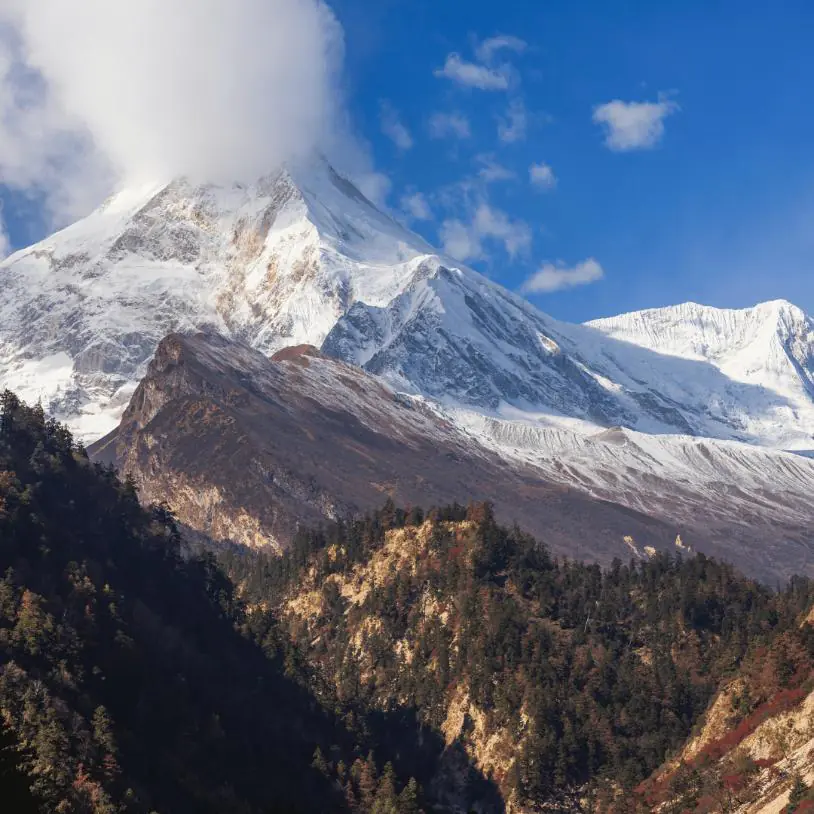
What makes this mountain special and what it likes in the Top 10 Peaks in Nepal is not just its height but also the variety of experiences it offers. The Manaslu circuit trek takes you through diverse terrains, from lush forests to high alpine pastures, and each step is captivating. The breathtaking views of snow-capped peaks, including Manaslu itself, and the chance to experience the traditional Tibetan-influenced lifestyle of the locals make this mountain a standout destination. Additionally, the challenging but thrilling climb to the summit attracts experienced mountaineers looking to test their skills in the peaceful and unspoiled landscape.
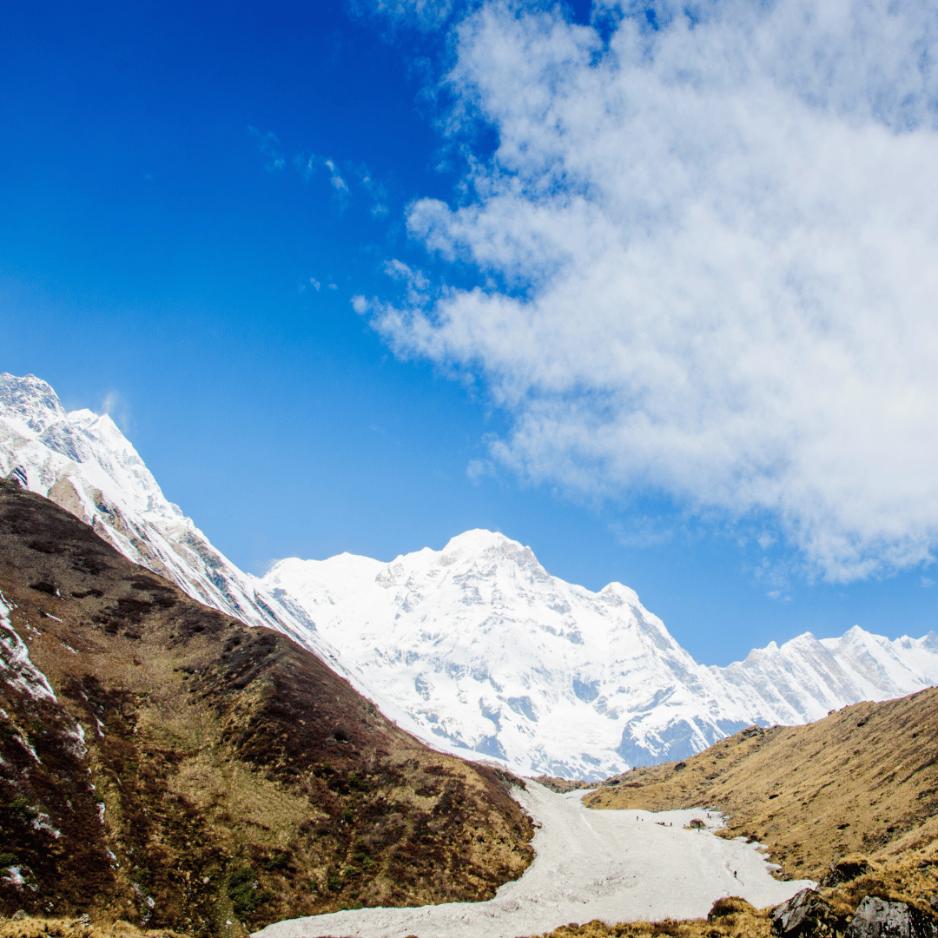
8. Annapurna
Annapurna is a majestic mountain located in the heart of the Nepal Himalayas and is one of the Top 10 Peaks in Nepal for many reasons. It’s a series of peaks, with Annapurna I being the highest, that mesmerizes adventurers and nature lovers alike. Annapurna’s appeal lies not only in its stunning beauty but also in the diversity it offers, ranging from lush forests to arid landscapes, making it an immersive experience for trekkers and mountaineers seeking a multifaceted journey. The iconic Annapurna Circuit trek, which encircles the entire massif, is famous for showcasing a diverse tapestry of natural beauty, cultural encounters, and unparalleled views, attracting travelers eager to immerse themselves in its awe-inspiring ambiance.

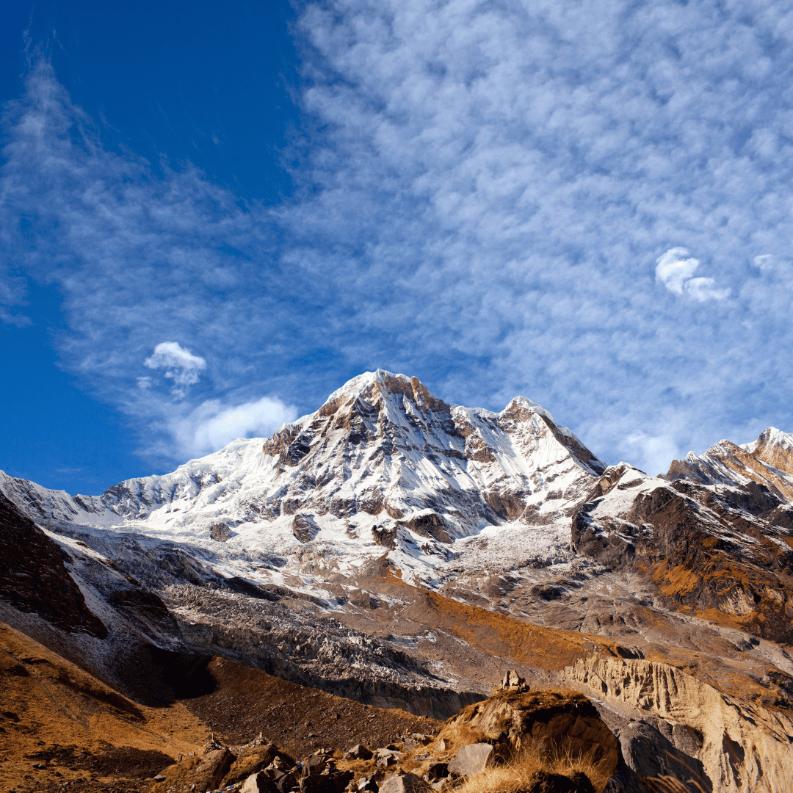
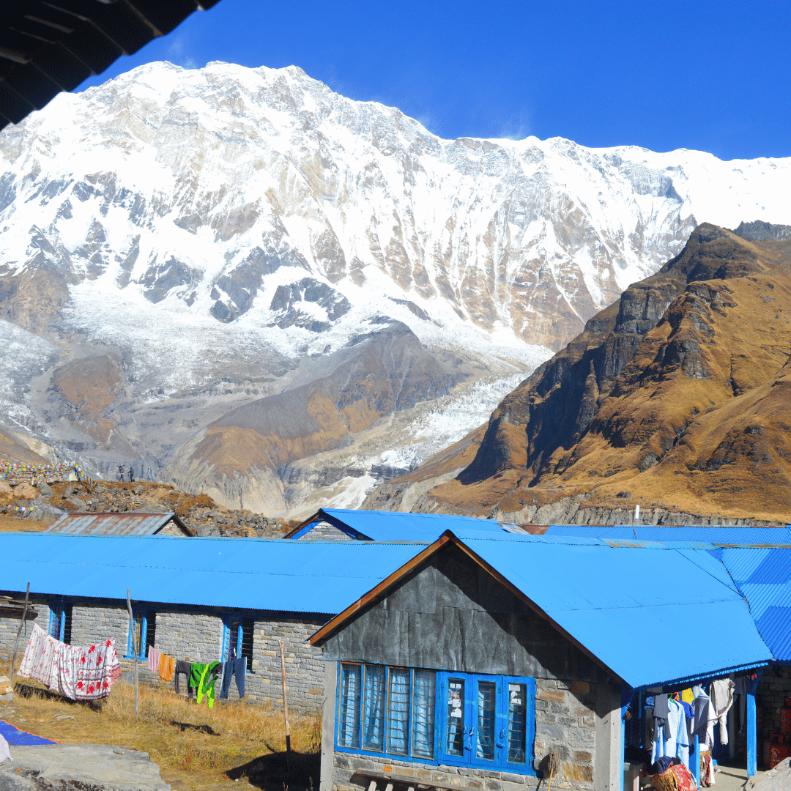
Annapurna’s inclusion in the Top 10 Peaks in Nepal is because of its status as one of the world’s highest peaks and its ability to offer a remarkable blend of adventure and tranquility. Its prominence as the 10th highest peak in the world allures climbers seeking the challenge of scaling formidable heights while treating them to panoramic views that will stay with them forever. Additionally, the Annapurna Conservation Area, a UNESCO-designated site, not only serves as a haven for biodiversity but also promotes sustainable tourism, emphasizing the mountain’s importance beyond its sheer altitude. Annapurna is a testament to nature’s artistry, inviting adventurers to explore its diverse landscapes and experience the grandeur of the Nepal Himalayas.
9. Nuptse
Nuptse, a captivating mountain in the Nepal Himalayas, is among the Top 10 Peaks in Nepal for many reasons. Despite being often overshadowed by its famous neighbor Everest, Nuptse is a stunning and visually striking peak. Its name, which means “west peak” in Tibetan, comes from its location to the west of the Everest massif. Nuptse’s steep ridges and icy slopes make it an irresistible challenge for experienced mountaineers seeking technical climbs and amazing views.
The appeal of Nuptse goes beyond its imposing height. Situated just southwest of Everest, Nuptse offers climbers breathtaking views of the Everest region, providing a unique perspective of the world’s tallest peak. Its sharp, rocky ridges and steep faces present a tough challenge, attracting climbers looking for the excitement of conquering its technical routes. Nuptse’s status among Nepal’s top peaks reflects its magnetic pull for adventurers seeking a mix of adrenaline, stunning scenery, and the ultimate test of mountaineering skill.
10. Gyachung Kang
Gyachung Kang, a hidden gem in the Nepali Himalayas, deserves its spot among the Top 10 Must-See Mountains, even though it’s often overlooked next to its more famous neighbors. This lesser-known peak, standing at 7,952 meters (26,089 feet), offers a unique and captivating challenge for adventurers and mountaineers. Its relative obscurity compared to other peaks adds to its allure, drawing climbers seeking untouched landscapes and the thrill of conquering uncharted heights.
What sets Gyachung Kang apart is its sheer technical difficulty. Its steep and dangerous slopes require expert climbing skills and experience. The mountain presents a tough climb with its sharp ridges and unpredictable weather conditions, making it an exciting yet daunting prospect for seasoned mountaineers. Gyachung Kang’s isolation and untouched beauty offer an unmatched sense of accomplishment to those who brave its ascent, making it a must-see for adventurers seeking the ultimate challenge amidst Nepal’s majestic peaks.
A Conclusion of Heights and Wonders
The Top 10 Must-See Peaks in Nepal Himalayas encapsulate the epitome of natural grandeur, embodying both beauty and challenge. Each summit narrates tales of human resilience, endurance, and the sheer magnificence of our planet.
FAQs
What equipment is essential for climbing these peaks?
Ascending these peaks demands specialized gear like crampons, ice axes, and high-altitude clothing to ensure safety and success.
Are there risks associated with climbing these peaks?
Yes, risks include altitude sickness, avalanches, and extreme weather conditions. Proper training and acclimatization are crucial.
How long does it take to summit these peaks?
The duration varies based on the peak and the climber’s experience, ranging from weeks to months of preparation and climbing.
Are permits required to climb these peaks?
Yes, climbers need permits issued by the Nepalese government, and regulations vary for each peak.
Can beginners attempt any of these peaks?
Beginners should start with less technical peaks and gain experience before attempting more challenging ascents.
What’s the best time of year for climbing these peaks?
Spring and autumn offer the most favorable weather conditions for climbing these peaks, providing clearer skies and stable temperatures.
You may also like:
Send an Enquiry
Error: Contact form not found.
© 2024 - Himalayan Trekking and Tours (P) Ltd. All Rights Reserved.


